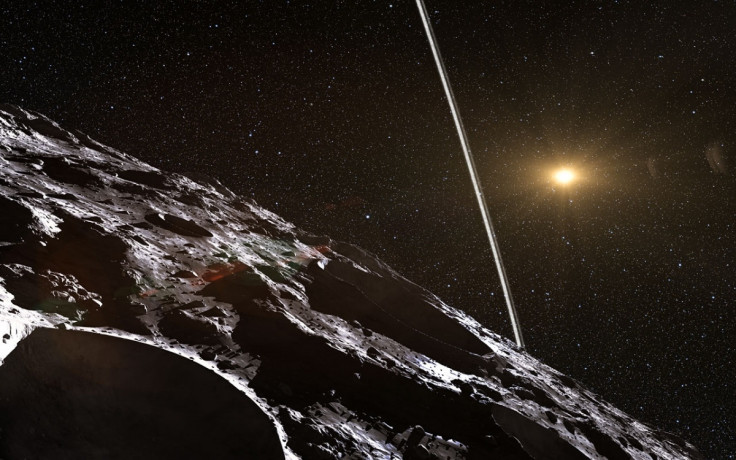Astronomers Discover First Saturn-Like Ring System Around Asteroid Chariklo

Astronomers have discovered the first ring system around an asteroid, proving that rings can exist around smaller objects orbiting the sun.
The rings of Saturn are one of the most spectacular sights in the sky and although less prominent rings have also been found around the other giant planets, no rings have been found around smaller objects.
Chariklo, the largest member of the Centaurs class which orbits between Saturn and Uranus in the outer Solar System, is surrounded by two fine rings.
Chariklo was discovered in 1997 by James Scotti of the Spacewatch programme and is named after the nymph Chariclo, the mythical wife of Chiron and the daughter of Apollo. Mike Brown, a professor of planetary astronomy at the California Institute of Technology, has listed Chariklo as a dwarf planet.
Lead author of the study Felipe Braga-Ribas, of the Ministry of Science and Technology in Rio de Janeiro, said: "We weren't looking for a ring and didn't think small bodies like Chariklo had them at all, so the discovery - and the amazing amount of detail we saw in the system - came as a complete surprise."
Astronmers at seven locations in South America tracked Chariklo as it passed in front of the star UCAC4 248-108672 in June 2013.
A few seconds before and a few seconds after the main occultation (when the star's light is blocked), there were two further very short dips in the star's apparent brightness, suggesting that something else was blocking the light. The team compared what they witnessed from different sites to reconstruct the shape and size of the object and its newly discovered rings.
The researchers found that the ring system consists of two sharply confined rings only 7km and 3km wide, separated by a clear gap of 9km — around a 250km-diameter object orbiting beyond Saturn.
Uffe Gråe Jørgensen, a member of the team from the Niels Bohr Institute at the University of Copenhagen, said: "It was quite amazing to realise that we were able not only to detect a ring system, but also pinpoint that it consists of two clearly distinct rings.
"I try to imagine how it would be to stand on ths surface of this icy object - small enough that a fast sports car could reach escape velocity and drive off into space - and stare up at a 20km-wide ring system 1,000 times closer than the moon."
It is unknown exactly how the rings were created, but astronomers think they were likely to have been formed from debris left over from a collision.
Braga-Ribas added: "As well as the rings, it's likely that Chariklo has at least one small moon still waiting to be discovered."
The rings may later lead to the formation of a small moon. Such a sequence of events, on a much larger scale, may explain the birth of our own moon in the early days of the Solar System, as well as the origin of many other satellites around planets and asteroids.
The team have provisionally named the rings Oiapoque and Chui, two rivers near the northern and southern extremes of Brazil.
© Copyright IBTimes 2025. All rights reserved.






















